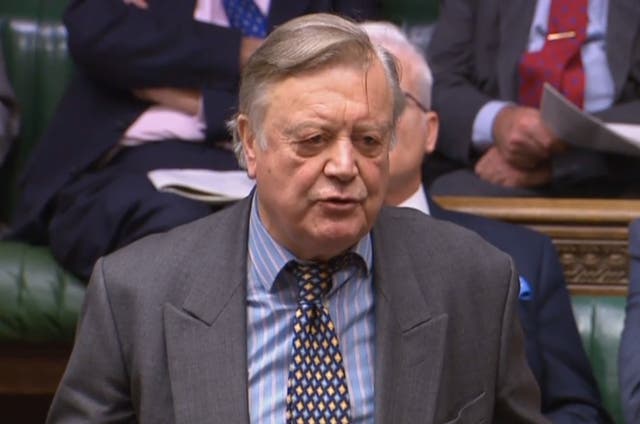MPs will choose from four Brexit options in the second round of the indicative vote process.
None of the eight alternatives to Prime Minister Theresa May’s plan considered last week won a majority.
But four of the ideas considered then will be considered again by MPs after Speaker John Bercow made his selection of motions to be put to the vote.
The Speaker has selected the following #Brexit options for #IndicativeVotes this evening:(C) Kenneth Clarke – Customs Union(D) @NickBoles – Common Market 2.0(E) @peterkyle – Confirmatory public vote(G) @joannaccherry – Parliamentary Supremacy pic.twitter.com/qMAMF0DRLt
— UK House of Commons (@HouseofCommons) April 1, 2019
Tory MPs will be given a free vote on the options, but Cabinet ministers will be told to abstain.
Labour MPs have been told to back motions calling for the so-called Common Market 2.0, a customs union and a second referendum.
Here are the motions selected by Mr Bercow:

– Motion C: Customs union
Tory former chancellor Ken Clarke’s customs union plan requires any Brexit deal to include, as a minimum, a commitment to negotiate a “permanent and comprehensive UK-wide customs union with the EU”.
This was defeated by the smallest margin in the first round, falling just six votes short. Labour will support the plan again.
– Motion D: Common market 2.0
Common Market 2.0:
– Respects result of the referendum by leaving the EU for EFTA – no more 'ever closer union'
– Leaves ECJ (EFTA court respects national sovereignty)
– Introduces safeguards on EU migration
– Protects jobs by maintaining full Single Market participation pic.twitter.com/sOSI58LDIQ
— Stephen Kinnock (@SKinnock) January 22, 2019
Tabled by Conservatives Nick Boles, Robert Halfon and Dame Caroline Spelman and Labour’s Stephen Kinnock, Lucy Powell plus the SNP’s Stewart Hosie.
The motion proposes UK membership of the European Free Trade Association and European Economic Area. It allows continued participation in the single market and a “comprehensive customs arrangement” with the EU after Brexit – including a “UK say” on future EU trade deals – would remain in place until the agreement of a wider trade deal which guarantees frictionless movement of goods and an open border in Ireland.
Labour and the SNP will support the amendment.
– Motion E: Confirmatory public vote
We're in Bolton, and virtually no one here thinks Brexit is going well.
Thank you @DavidCrausby and @YasminQureshiMP for supporting a confirmatory referendum on the final deal last week – whatever agreement is reached, this needs to go back to the people.#100×100 pic.twitter.com/9wV4wisWGU
— Our Future, Our Choice (@OFOCBrexit) March 30, 2019
It has been drawn up by Labour MPs Peter Kyle and Phil Wilson. This motion would require a public vote to confirm any Brexit deal passed by Parliament before its ratification. This option, tabled last time by Labour former minister Dame Margaret Beckett, polled the highest number of votes although was defeated by 295 votes to 268.
Labour is expected to back the plan.
– Motion G: Parliamentary supremacy
If we can't agree a deal we want:1. We ask for an extension2. If the EU says no there's no time for a referendum so3. Parliament chooses between either (1) No Deal or (2) Revoking, with a commitment to a public inquiry into what we want and a possible further notification pic.twitter.com/8xD9WnHyTT
— Jo Maugham QC (@JolyonMaugham) March 29, 2019
SNP MP Joanna Cherry joins with Dominic Grieve and MPs from other parties with this plan to seek an extension to the Brexit process, and if this is not possible then Parliament will choose between either no-deal or revoking Article 50.
An inquiry would follow to assess the future relationship likely to be acceptable to Brussels and have majority support in the UK.
